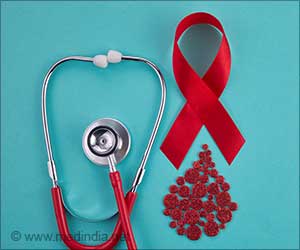Antibiotic-free method of treating burn injury infections can be done by blinding the bacteria instead of killing them, finds a study from UT Southwestern Medical Center.

- Burn injury infections are one of the common complications of burns.
- Antibiotics used in the treatment of burn injury infections may develop resistance.
- Burn Injury Infections can be treated using a new way of blinding the bacteria instead of killing them.
"Rather than killing the bacteria, we blinded them so they could not find the places where they normally stick to the host (body's) cells. If bacteria cannot bind, they cannot grow," he added.
The study was conducted on one of the most lethal pathogens called Pseudomonas aeruginosa which is found in 33% of burn cases and 59% of extensive burns. The research team also showed that the topical application of engineered adhesion inhibitor molecule called Multivalent Adhesion Molecule 7 or MAM 7 to have significantly decreased the bacterial levels in the wounds and prevent the spread of the infection for three days.
They also found the molecule to have wound healing properties and maintain normal inflammatory responses.
Dr. Kim Orth, Professor of Molecular Biology and Biochemistry at UT Southwestern, said, Antibiotics fight bacterial infections by killing them. However when placed under extreme conditions they may develop antibiotic resistance.
The situation was compared to the parking place of the shopping mall. She explained that if all the parking places were filled then the bacteria would not have any place to park.
He also found that the lack of adhesion molecule made the bacteria to be less available to cause infections. The research team was able to study the molecular activity of the adhesion molecule and test its efficacy using a fluorescent-strain of antibiotic-resistant bacteria in an animal model.
Dr. Orth, said, "We attached lots of copies of MAM7 to the microbeads. In this study, we found that topically applied MAM7-coupled microbeads reach the cells' binding sites first and - for at least four days in this experiment - stay there, without hindering wound healing. The MAM7 adhesion inhibitors remain on the wounds and prevent the bacteria from binding to the tissue."
This strategy can also be used to rule out treatment options for diabetes and surgical wounds that can be infected, said, Dr.Krachler.
Antibiotic Resistance
Antibiotic resistance may scare prevention and treatment options for bacterial infections. Methicillin Resistant Staphylococcus aureus (MRSA) may cause infections and are resistant to most of the antibiotics.
According to the Centers for Disease Control and Prevention, Antibiotic Resistance Threats in the United States in 2013 proved that around 2 million people are affected by the bacteria and around 23,000 people die due to the infections.
How to Prevent Antibiotic Resistance
- Antibiotics should not be used for common cold and other viral infections.
- Follow the entire course of antibiotics prescribed by the doctor to avoid resistance.
Burn Injuries are often caused due to heat, chemicals, electricity or radiation. Burn injury infections can increase the risk of bacterial infections leading to sepsis. It is one of the most common complications of burn injuries. These infections may travel through the bloodstream and affect the body. Burn injury infections may also occur due to the use of tubes and catheters.
References
- Burns - ( https://medlineplus.gov/burns.html)
- Burn Injury Complications - ( http://www.mayoclinic.org/diseases-conditions/burns/basics/complications/con-20035028)
- Antibiotic Resistance Threats in the United States, 2013 - ( https://www.cdc.gov/drugresistance/threat-report-2013/ )
Source-Medindia














